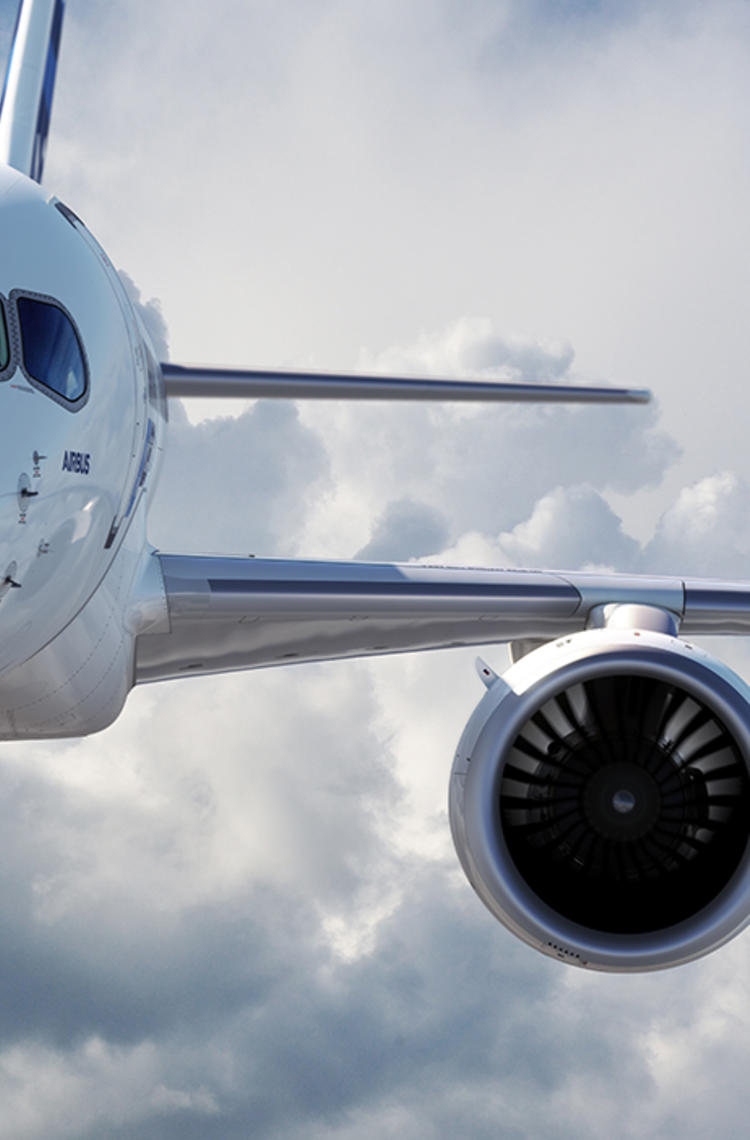The A220’s engine – PW1500G – is a major leap forward in new-generation efficiency thanks to its unique geared propulsion system. In this second installment of our A220 web series, we explore the recent improvements to the engine that are enhancing durability and delivering concrete results.
Jet engines have come a long way since the advent of aviation. Indeed, today’s turbofans are much more efficient than their predecessors, thanks to a variety of technological innovations that have prioritised fuel efficiency.
For the A220, new-generation efficiency is etched in the aircraft’s DNA. And no other aspect of the aircraft delivers more fuel efficiency than its engine – the PW1500G from the Pratt & Whitney GTF™ Family. Tailored specifically for the A220, this latest-generation engine delivers double-digit fuel reductions and fewer noise emissions compared to previous-generation engines in the same class.
To achieve these efficiencies, the PW1500G has an impressive 73” fan diameter and a 12:1 bypass ratio – among the highest of any turbofan engine in the world. The large fan blades can thus operate at lower speeds, which enhances the overall efficiency of the engine while reducing noise and drag.
A gearbox for improved thrust generation
Thanks to this remarkable design, there is no doubt the PW1500G engine is a significant step change in efficiency. But to better understand just how much of a technological leap forward it is, a closer look at conventional engines is required.
In conventional turbofan engines, a single shaft connects all the low-pressure components, including fan, compressor and turbine. This means the components are forced to operate at the same speed. For example, fan speed is constrained by the low-pressure spool, while the low-pressure compressor and turbine are constrained by the fan. This can lead to inefficiencies in thrust during take-off and climb, resulting in more fuel burn.
On the other hand, the PW1500G has a gearbox between the fan and the low-pressure core, enabling each section to operate at its own optimal speed. For example, the large front fan spins slower for maximum air intake efficiency, while the core with its compressor and turbine operates at a much faster speed for improved thrust generation. The result is a very high overall efficiency, which reduces fuel consumption and CO2 emissions, and decreases the noise footprint.
Fostering a culture of continuous improvement
Since its debut, the PW1500G has lived up to its efficiency promise, delivering up to 25% better fuel efficiency and 50% less noise compared to previous-generation engines. However, like many new centerline engines, it has not been without its share of challenges.
For example, initial PW1500G engines have encountered lower-than-expected time on wing due to parts replacement and supply chain challenges. Pratt & Whitney has developed a suite of durability improvements to address this situation, including a new Life-Limited Part stack, hot section improvements, and other hardware and software updates. These improvements are now showing results: engines are reaching intervals of more than double what earlier configurations achieved, and additional improvements will deliver even further over the next two to three years.
Despite these challenges, Pratt & Whitney has demonstrated its commitment to continuous improvement by significantly increasing its MRO capacity over the years: most improvements are now available, and future improvements will be upgradable at the first major maintenance visit. These efforts will remain key as the engine continues to power hundreds of A220 aircraft for over 30 customers worldwide, delivering fuel burn and CO2 emissions savings along the way.
The industry-leading geared propulsion system has truly been a revolution for aircraft efficiency. We’re so proud to be able to deliver double-digit fuel savings to A220 operators.
Mary Beth Cooley, PW1500G Chief Engineer at RTX’s Pratt & Whitney
